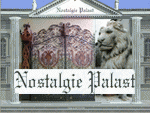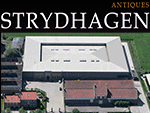|
Original lithograph
24,5cm x 31,5cm
signed in pencil G. B.
Cat. Raisonné Valier n° 122 , Cat. Mourlot n° 55
SOLD
Artist Biography
Georges Braque was born on May 13, 1882, in Argenteuil-sur-Seine, France. Braque grew up in the town of Le Havre, and studied evenings at the Ecole des Beaux-Arts there from about 1897 to 1899. Braque left for Paris to study under a master decorator to receive his craftsman certificate in 1901. From 1902 to 1904, Braque painted at the Académie Humbert in Paris, where he met Marie Laurencin and Francis Picabia. By 1906, Braque's work was no longer Impressionist but Fauve in style. After spending the summer of that year in Antwerp with Othon Friesz, he showed his Fauve in the 1907 Salon des Indépendants in Paris. His first solo show was at Daniel-Henri Kahnweiler's gallery in 1908.
From 1909 forward, Braque collaborated with Pablo Picasso in developing Cubism, and by 1911, their styles had become extremely similar. In 1912, they started to incorporate collage elements into their paintings and to experiment with the papier collé (pasted paper) technique. Their collaboration lasted until 1914. Braque served in the French army during World War I and was wounded in battle. Upon recovering, he developed a close friendship with the artist Juan Gris. After World War I, Braque's work became less and less schematic and more free. His fame grew in 1922 as a result of an exhibition at the Salon d'Automne in Paris. In the mid-1920s, Braque designed the decor for two Sergei Diaghilev ballets. By the end of the decade, he had returned to a more realistic interpretation of nature, although Cubist elements always remained present in his work.
In 1931, Braque made his first engraved plasters and began to portray mythological subjects. His first important retrospective took place in 1933 at the Kunsthalle Basel. In 1937 he won First Prize at the Carnegie International in Pittsburgh. During World War II, Braque remained in Paris. His paintings at that time, primarily still lifes and interiors, became more somber. In addition to paintings, Braque also made lithographs, engravings, and sculpture. From the late 1940s, he treated various recurring themes, such as birds, ateliers, landscapes, and seascapes. In 1954, he designed stained-glass windows for the Varengeville Church. During the last few years of his life, Braque's ill health prevented him from undertaking further large-scale commissions, but he continued to paint, print lithographs, and design jewelry. He died on August 31, 1963, in Paris.
|






















